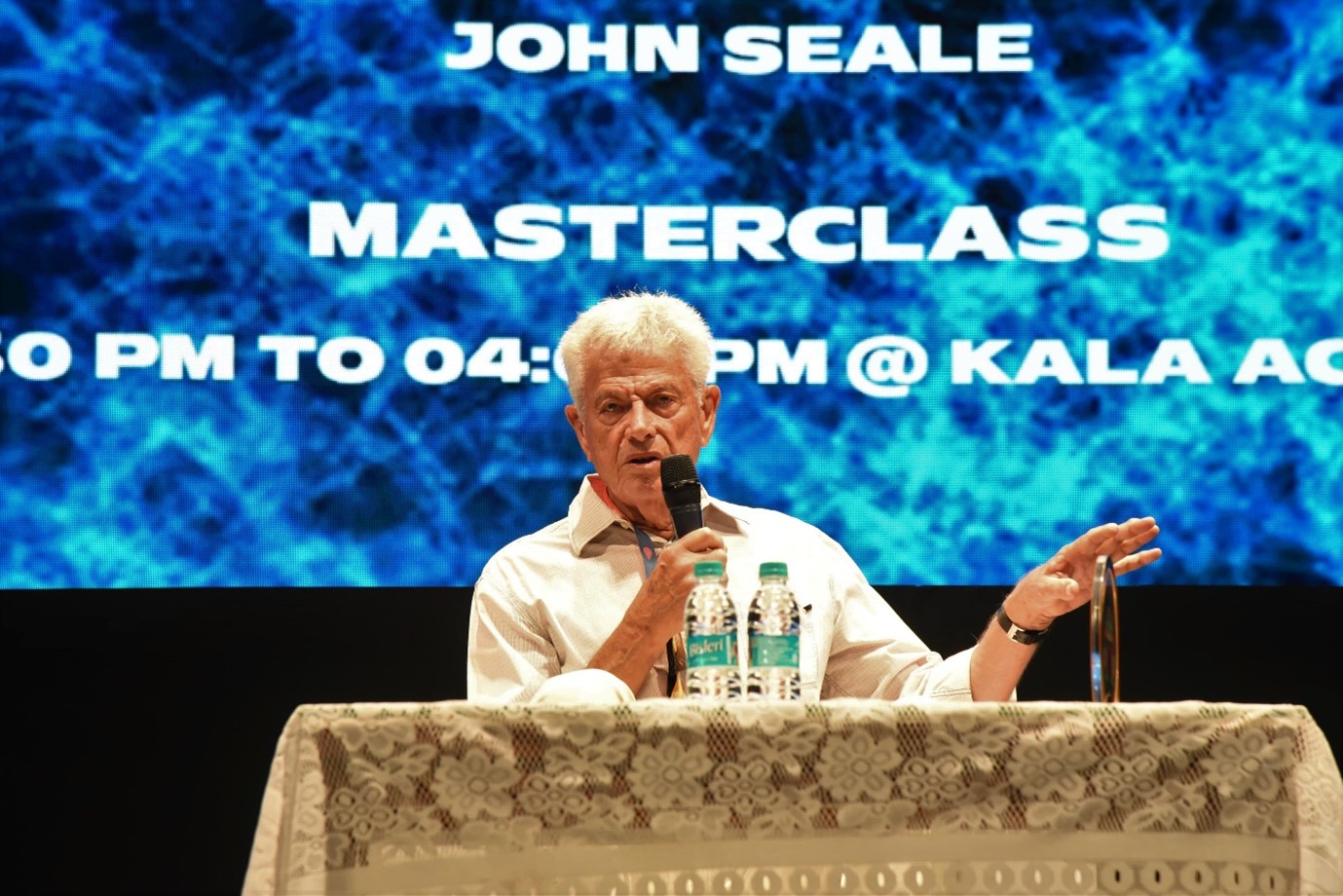Ministry of Information & Broadcasting
There is no Formula for a Cameraperson; Every film is a New Film: Cinematographer John Seale at IFFI 2024
Cinematographers should approach every new film as their first film: John Seale
#IFFIWood, 23 November 2024
The "In-Conversation" session at the 55th International Film Festival of India, Goa with renowned cinematographer John Seale explored his extensive career and insights into the art of cinematography. Seale discussed the transformative power of light in visual storytelling, highlighting the importance of creating a new approach for each film. He emphasized that there is no formula for cinematography—every project, with its unique script, geography, and context, requires fresh thinking.
Seale's journey began in the 1960s when the Australian film industry was emerging, and he worked across a range of media, from documentaries to drama, learning the craft on the job. His work with the Australian Broadcasting Corporation (ABC) allowed him to develop his skills, including covering horse races and filming television shorts. I can give a long lecture on how to cover horse race," he said.

As the Australian cinema industry blossomed, Seale and his peers made films driven by passion, not by America's formulaic structure “a wide-shot – medium-shot and a close-up”. This approach was admired internationally, especially in America, where filmmakers appreciated the Australian way of working within budget and schedule constraints. “There is no formula for Cinematography. You might have created a style for one film – I might admire it and think I might take it on to next film. But NO! Every film is unique. In Australia, we practised 'what if’ system. ‘What if this happens? What if this has to be here?’
Seale shared his belief that camera professional must constantly approach each project as though it’s their first film. He noted how, over time, he transitioned from using a single camera to multiple cameras, allowing for more dynamic coverage of actors and improvisational scenes. He fondly recalled how while shooting a scene, the actor dropped a toothpick which was not in the script but beautifully improvised on it. “It was then I realised we must cross-shoot this with two cameras simultaneously.” he shared. “But in those days, we always carried a spare camera for in case of emergency if the one being shot got some technical issues. So, I just shouted ‘EMERGENCY’ and winked at the Director. He understood and that’s how we shot the rest of the scene with two-camera set up,” he laughed.
Seale also underscored the importance of being both the lighting cameraman and the operator, as it creates a closer bond with the director and actors, which is essential for crafting compelling films. “When many of my friends got up to the higher levels in camera profession I preferred to be the lighting cameraman and operator because I always felt I stayed close to the director helping him bring visually what he wanted.”

Seale also shared his efforts in understanding the actor’s side in performing and how camera person’s technical aspects can cause hindrance to them in delivering. “I always found an actor becoming mechanical when they have to follow the ‘marks’ signed on the floor to get the right focus or shot -which is usually marked by the camera crew or focus puller.” He explained that it is not their job but the camera person’s. So, he preferred making marks for the camera – where the crew will know where to get the right focus and the actor need not worry about it.
He also shared how he replaced the clap board that used to annoy actors because of the noise and sound where he/she had to prepare and come to the character. “So, we brought in slide-in boards without noise which gave them time to prepare and come to character.”
The session highlighted his philosophy of ensuring the audience remains immersed in the film. Seale described the challenges of capturing moments that would keep viewers engaged, such as the example of managing the emotional intensity of actors in a stormy scene. He also stressed that each film must be treated as a unique project, avoiding repetition from previous works. The importance of pre-production and understanding the director's vision were key points in his process, especially regarding technical choices like camera lenses, which can significantly affect both the actors and the story. “The more work you do during the pre-production the more it gets easier during capturing those while filming.”
Seale's conversation revealed the depth of his experience and commitment to the art of cinematography, showing how vital it is to adapt and innovate for every new film while maintaining a deep connection with the actors and the audience.
Answering a question on can the new age cameras – digital help the differently abled persons become a cinematographer since there is a common thought that Persons with Disability (PwDs) cannot be good cinematographers, he expressed his belief that of course the cameras can really help anyone can be a creator. “It's the script!” he stressed mentioning that physical disability cannot stop a creator.
* * *
 PIB IFFI CAST AND CREW | Rajith/Dhanalakshmi/Darshana | IFFI 55 - 64
PIB IFFI CAST AND CREW | Rajith/Dhanalakshmi/Darshana | IFFI 55 - 64
(रिलीज़ आईडी: 2076400)
आगंतुक पटल : 657